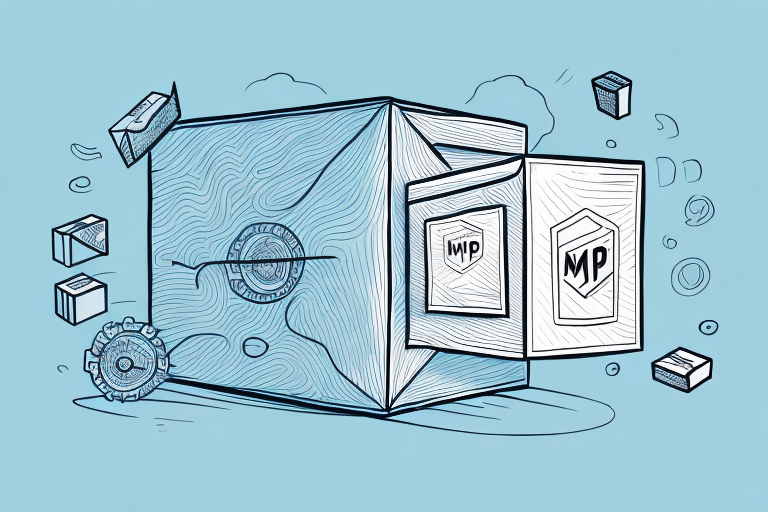The Best Packaging Solutions for Shipping
When it comes to shipping products, choosing the right packaging is crucial. The right packaging can protect your product during transit, ensure safe delivery, and even help build a positive reputation for your brand. In this article, we'll discuss the different types of shipping packaging solutions available and the factors to consider when choosing the best option for your business.
Introduction: Importance of Choosing the Right Packaging for Shipping
Shipping products can be a complex process. From ensuring your product is packaged properly to making sure it arrives at its destination without damage, there is a lot to consider. This is why it's essential to choose the right packaging for your products. The right packaging can provide an added layer of protection and ensure successful delivery, while the wrong packaging can lead to delayed shipments, damaged goods, and even unhappy customers.
One important factor to consider when choosing packaging for shipping is the type of product being shipped. Fragile items, such as glassware or electronics, require packaging that provides extra cushioning and protection. According to the UPS Shipping Insights, approximately 1 in 3 packages experience some form of damage during transit, highlighting the need for appropriate packaging materials.
Another consideration is the shipping method being used. Different shipping methods, such as ground shipping or air shipping, may require different types of packaging to ensure safe delivery. For example, air shipping may require packaging that is more lightweight and compact, while ground shipping may allow for more bulky packaging options.
Factors to Consider When Choosing Shipping Packaging Solutions
When selecting the best packaging for your products, several factors should be taken into consideration:
- Nature of the Product: Is it fragile or sensitive to temperature changes? Is it small or large? These factors will determine the type of packaging that will provide the necessary protection and support for your shipment.
- Shipping Method and Distance: Are you shipping domestically or internationally? Will the product be traveling by air or ground? Is it a short-distance or long-distance shipment? These factors will determine the level of protection and durability required for your packaging.
- Budget, Sustainability, and Branding: Can you afford custom or specialty packaging, or do you need to stick to standard options? Are you committed to eco-friendly packaging solutions, or is cost your primary concern? Will your packaging material affect your brand image or even product functionality?
- Regulations and Requirements: Different countries have strict regulations on the type of packaging materials that can be used for certain products. It's important to research and comply with these regulations to avoid any delays or penalties.
- Shipping Cost: The type and size of packaging can significantly affect shipping costs. Bulky or heavy packaging may result in higher shipping fees, especially for international shipments. Striking a balance between protection and cost is essential.
Types of Shipping Packaging: Pros and Cons
Cardboard Boxes
Cardboard boxes are the gold standard of shipping packaging due to their durability, versatility, and cost-effectiveness. They provide ample protection for most products and can be customized to include dividers, inserts, or even branding. However, they may not be suitable for extremely fragile or high-value items and might require additional cushioning or support.
Bubble Wrap
Bubble wrap is essential for safe shipping, especially for fragile items. It provides an additional layer of protection and cushioning, ensuring that products remain intact even during rough handling or impact. However, it may not be suitable for heavy or bulky items and can add to both shipping costs and environmental waste.
Foam Inserts
Foam inserts are designed specifically to protect fragile or sensitive items during transit. They offer excellent shock absorption, vibration resistance, and insulation, keeping your products safe and secure. However, foam inserts may add weight to your package and may not be cost-effective for larger or multiple items.
Specialty Boxes
Specialty boxes are custom solutions that cater to unique or irregular product shapes and sizes. They may come in various forms, such as telescoping boxes, tri-wall boxes, or multi-depth boxes, providing a perfect fit for your products. However, they can be expensive, require a minimum order quantity, or have longer lead times.
Poly Mailers
Poly mailers are a lightweight and cost-effective shipping option suitable for smaller, non-fragile products. They are water-resistant, tear-resistant, and often come with a self-sealing adhesive, making them easy to use and secure. However, they may not provide sufficient protection for heavy or valuable items and may not support extensive branding or customization.
Padded Envelopes
Padded envelopes are a versatile solution for shipping small items that require some cushioning. They come in various sizes, shapes, and materials, providing greater flexibility and convenience. However, they may not be suitable for high-value or extremely fragile items and might require additional protection for rough handling or long-distance shipping.
Shrink Wrap
Shrink wrap is a plastic material used for securing large or irregularly shaped items during transit. It can be applied using heat to create a tight, protective layer around the product, preventing movement and damage. However, it may require specialized equipment and may not be suitable for products that require ventilation or easy access.
Labels and Markings
Labels and markings are an essential part of shipping packaging, providing crucial information for safe delivery. They may include warning labels, handling instructions, tracking numbers, return addresses, and even branding. Incorrect or missing labels can result in delayed shipments or lost products.
Environmental Considerations
When choosing shipping packaging, it's important to consider the environmental impact of your choices. Cardboard boxes and paper-based materials are recyclable and biodegradable, making them more sustainable options. In contrast, bubble wrap, foam inserts, and shrink wrap are made from plastic and may not be recyclable in all areas. Poly mailers and padded envelopes may be made from recycled materials, but they still contribute to plastic waste. Consider using eco-friendly packaging options, such as biodegradable or compostable materials, to reduce your carbon footprint.
Best Practices for Packing and Securing Your Shipment
Once you've selected the best packaging solution for your product, it's essential to pack and secure your shipment properly to ensure safe delivery. Here are some best practices to consider:
- Use Appropriate Tape: Seal all seams securely with high-quality packing tape to prevent the package from opening during transit.
- Add Sufficient Cushioning: Use materials like bubble wrap or foam inserts to provide adequate cushioning and support.
- Position Fragile Items Carefully: Place fragile items in the center of the package, away from the edges and corners, to minimize the risk of damage.
- Use Dividers or Inserts: For multiple items in one box, use dividers or inserts to keep them separated and prevent movement.
- Label and Mark the Package Correctly: Include the return address, tracking number, and any necessary handling instructions to ensure proper delivery.
- Consider Insurance or Signature Confirmation: For high-value items, adding insurance or requiring a signature upon delivery can provide additional security.
Another important factor is weight distribution. Distribute the weight evenly to prevent the package from tipping over or getting damaged during transit. Place heavier items at the bottom and lighter items on top to maintain stability.
Additionally, choosing the right size box is crucial. Using a box that is too large can lead to items moving around during transit, causing damage. Conversely, a box that is too small can compress the product, leading to breakage or deformation. Always select a box that snugly fits your product with minimal extra space.
Recycling and Sustainability in Shipping Packaging
As the world becomes more environmentally conscious, it's vital to consider the sustainability of your packaging solutions. Fortunately, there are several eco-friendly options available, such as biodegradable or compostable materials, recycled content, and reusable packaging. These options not only reduce waste but also promote a positive brand image and appeal to environmentally conscious customers.
One of the most significant benefits of using sustainable packaging is the reduction of carbon emissions. According to a study by the Environmental Protection Agency (EPA), sustainable packaging can significantly decrease a company's carbon footprint. Additionally, sustainable packaging can help reduce transportation costs, as it is often lighter and more compact than traditional packaging materials.
Another important consideration is end-of-life disposal. While biodegradable and compostable materials are excellent options, it's crucial to ensure they are disposed of correctly. Companies can provide clear instructions to customers on how to dispose of their packaging properly or even offer take-back programs to ensure that the packaging is recycled or composted appropriately.
Conclusion: Finding the Right Packaging Solution for Your Business
Choosing the best packaging solution for your business can be a daunting task, but it's essential for ensuring the successful and safe shipment of your products. By considering the nature of your products, shipping requirements, budget, sustainability, and branding, you can select the right packaging that provides the necessary protection and support for your shipments.
With proper packing and labeling, you can ensure that your products arrive on time and in perfect condition, building a positive reputation for your brand and promoting customer satisfaction. It's also crucial to comply with relevant regulations and standards. For instance, if you're shipping hazardous materials, ensure that your packaging meets the Department of Transportation (DOT) requirements. Additionally, when shipping internationally, adhere to customs regulations and the packaging standards of the destination country to avoid costly fines and shipping delays.
Staying up-to-date on regulations and industry best practices will help you navigate the complexities of shipping, ultimately contributing to the success and growth of your business.




















